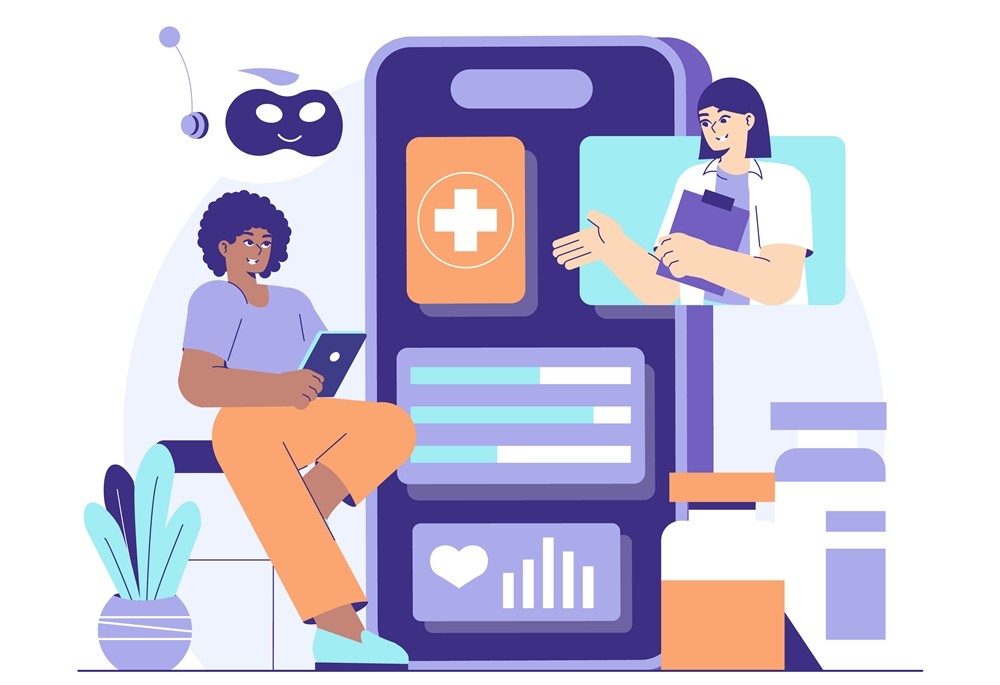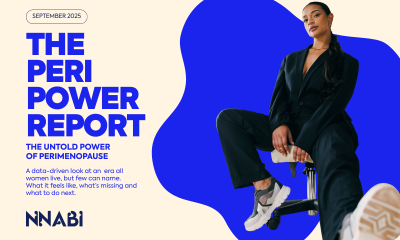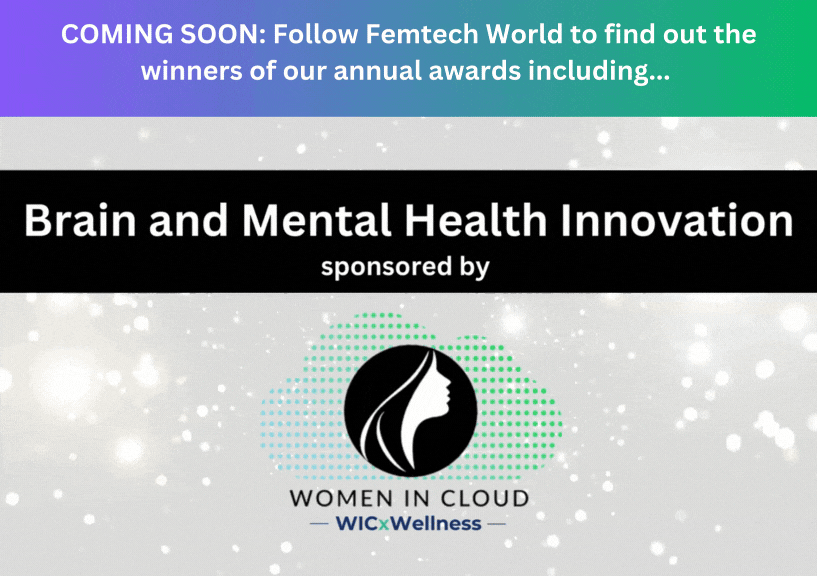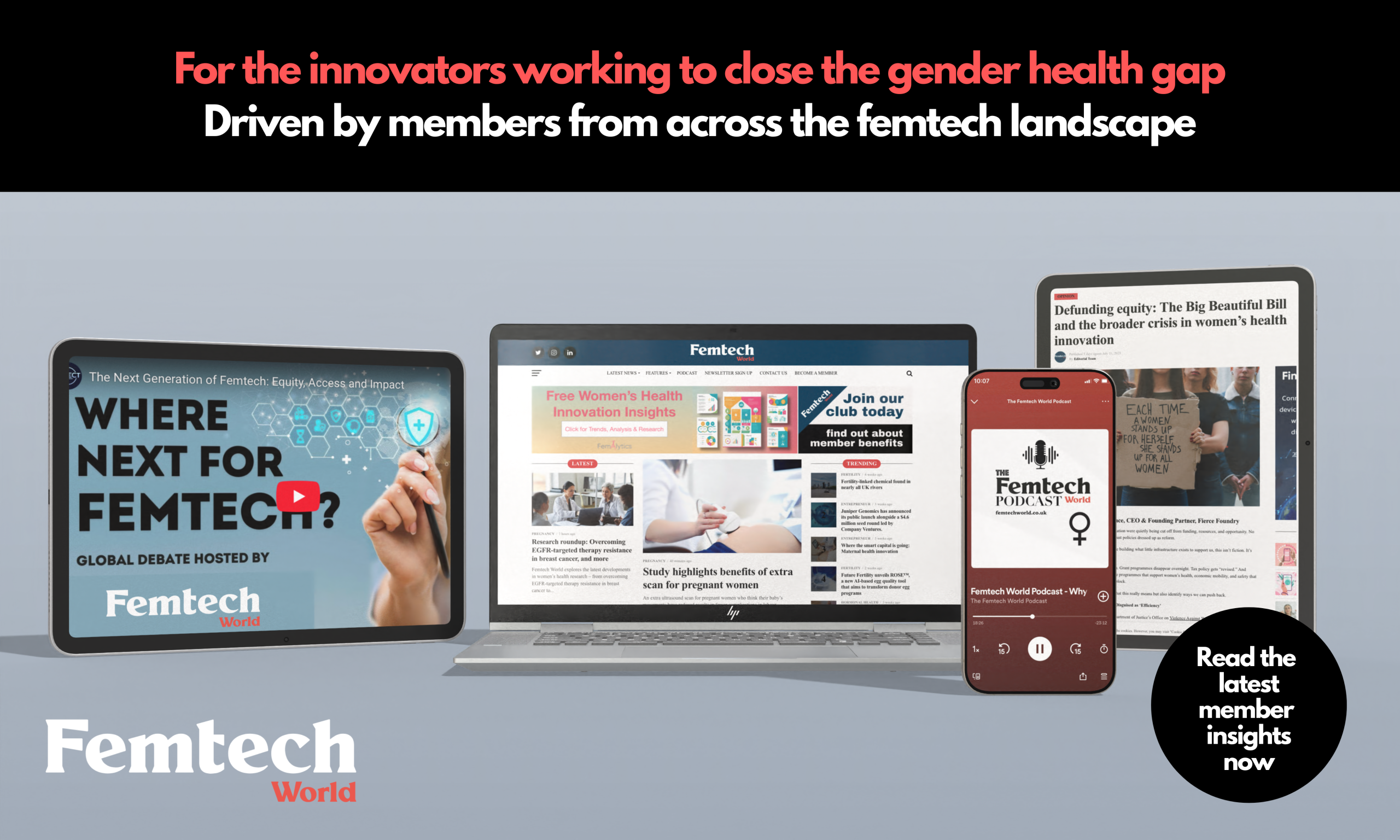Insight
Why AI in women’s health needs to start with curiosity
By Morgan Rose, Chief Science Officer, Ema

Women’s pain is complex, often overlapping between physical, emotional, and social dimensions.
Chronic pain affects 70 per cent of female sufferers yet is frequently misdiagnosed or dismissed as psychological (Oh, n.d.; UCL, 2021).
Curiosity is the key to addressing this gap.
By asking thoughtful questions and uncovering connections, AI can move beyond surface symptoms to build trust, foster understanding, and uncover root causes.
This curiosity-driven approach ensures earlier diagnoses, more effective treatments, and care that truly resonates with women’s unique experiences—bridging the gaps traditional healthcare often leaves behind.
Understanding Pain as More Than Physical
Pain isn’t just physical; it encompasses emotional and social dimensions that significantly impact women’s health.
Physical Pain: Women often experience conditions like fibromyalgia and migraines more frequently than men.
These ailments are painful and challenging to diagnose and treat, leading to prolonged suffering.
Biological and hormonal factors significantly influence these conditions.
For example, fluctuations in estrogen levels have been shown to exacerbate pain sensitivity, highlighting the need for sex-specific approaches to treatment (IASP, n.d.; PMC, n.d.).
Research Insight: Studies indicate that women’s pain is more likely to be dismissed or misdiagnosed due to gender biases in healthcare (UCL, 2021).
A curious approach can counteract these biases by delving into specific triggers and experiences.
Asking targeted, open-ended questions can help identify patterns that might be overlooked.
Example Question: “You mentioned frequent migraines—have you noticed if they occur more during certain phases of your menstrual cycle or after stressful events?”
Emotional Pain: Chronic pain often coexists with emotional distress, including depression and anxiety.
Women are twice as likely as men to experience these conditions, which can exacerbate their physical symptoms and create a cycle of suffering (Mayo Clinic, n.d.; Kushner, 2024).
The emotional distress associated with chronic pain often exacerbates the perception of pain, creating a cycle that’s hard to break (Dovepress, 2024).
Research Insight: Emotional pain is frequently underdiagnosed or mischaracterised in women, often overshadowing underlying physical conditions (Mayo Clinic, n.d.; Kushner, 2024).
Addressing both dimensions through curiosity fosters holistic care.
Exploring the emotional context of pain through thoughtful questions can uncover hidden contributors to distress.
Social Pain: Social rejection, isolation, and stigma are significant contributors to women’s pain experiences.
For instance, caregiving responsibilities and societal pressures disproportionately affect women, amplifying their vulnerability to social pain (IASP, n.d.; PMC, 2024).
Societal factors, including gender biases, can lead to women’s pain being dismissed or underestimated by healthcare providers.
This dismissal delays appropriate treatment and contributes to feelings of isolation and helplessness (Psychology Today, 2024).
Research Insight: Social determinants, such as poverty and neighborhood conditions, significantly influence pain intensity, particularly in conditions like breast cancer (PMC, 2024).
Curiosity-driven care can help identify and address these factors. Addressing social pain requires understanding the broader context of a woman’s life.
Curiosity in Practice: Improving Diagnosis and Care
Delayed Diagnosis
Women often face significant delays in receiving diagnoses for chronic pain conditions like endometriosis and pelvic pain (Independent, 2024).
These delays are attributed to biases, normalization of symptoms, and limited access to care (MDU, 2024).
How Curiosity Changes the Game
Curiosity goes beyond simply asking questions—it’s about exploring someone’s unique challenges and identifying connections they might not see themselves.
Research shows that curiosity-driven approaches foster trust, enhance engagement, and lead to more accurate diagnoses in healthcare.
They are designed with curiosity at its core, can uncover root causes, and provide meaningful support in women’s health. Here’s how:
1. Asking the Right Questions to Build Trust
A curious approach encourages open dialogue, helping women feel understood and validated.
Studies reveal that patients who feel heard are more likely to share critical information, leading to better outcomes.
- “You mentioned fatigue—do you notice it more after specific activities or during certain times of the month?” This shows attentiveness and opens the door to uncovering hormonal or lifestyle connections.
2. Uncovering Overlooked Patterns
Curiosity allows AI to identify connections that might not be immediately obvious, such as how diet, stress, and sleep interact to affect overall health.
Research highlights that women often present with complex, multifaceted symptoms that require nuanced exploration.
- Example: “Have you noticed whether your skin flare-ups happen during periods of high stress or poor sleep? Let’s explore the potential links.”
3. Encouraging Reflection for Deeper Insights
Curiosity-driven AI doesn’t just provide answers—it helps women reflect on their habits, symptoms, and patterns.
This reflective process empowers patients to take ownership of their health.
- Example: “What impacts your energy most—your diet, stress, or sleep? Why do you think that is?”
4. Creating Personalised, Actionable Plans
When curiosity informs recommendations, they feel more relevant and actionable. Personalized care has been proven to increase adherence to health advice, improving outcomes.
- Example: “Would you like to start adjusting your hydration or exploring sleep routines? Let’s choose what feels manageable for you.”
5. Supporting Holistic Health
Women’s health is deeply interconnected. Curiosity allows AI to address not just the physical symptoms but the emotional and social factors as well.
- Example: “You mentioned stress and skin health—have you noticed any connections between the two? Let’s explore what might be contributing.”
6. Inspiring Confidence and Action
The right questions can help users discover practical, achievable steps. Curiosity creates those “aha” moments that make users feel capable of making meaningful changes.
- Example: “Have you tried syncing your workouts with your cycle? It could boost your energy and help you feel more in tune with your body. Would you like to explore how to get started?”
7. Keeping the Conversation Going
Curiosity also helps AI maintain long-term engagement because users feel their progress matters. They’re more likely to return and keep exploring solutions.
- Example: “Let’s check in next week to see how those hydration tips worked for you. What might you notice after trying them for a few days?”
The Bigger Picture
Curiosity isn’t just a nice to have; it’s essential for addressing the complexities of women’s health.
It builds trust, keeps users engaged, and helps uncover connections that lead to meaningful solutions.
By focusing on the person behind the pain—and asking thoughtful, open-ended questions—AI can bridge the gaps that traditional healthcare often leaves behind.
When AI tools like Ema approach women’s health curiously, they move beyond simply tracking symptoms.
They create a space where women feel seen, heard, and empowered to take control of their health—physically, emotionally, and socially.
Why This Matters
Women’s health has long been underserved, with too many tools and platforms treating it as one-dimensional.
By making curiosity the foundation of AI interactions, we can change that.
Curiosity doesn’t just solve problems—it helps women feel connected to their health in a way that’s personal, honest, and empowering.
That’s the kind of change we need.
Morgan Rose is a Certified Nurse Midwife, Women’s Health Nurse Practitioner, and International Board-Certified Lactation Consultant with over a decade of experience supporting women’s health. As the Chief Science Officer at Ema, Morgan combines her expertise with her passion for empowering women. She lives with her spunky daughter and their beloved dog in New York City.
References
- Dovepress. (2024). The connection between emotional distress and chronic pain. Retrieved from www.dovepress.com
- Independent. (2024). One in Three Women with Female Health Conditions Forced to Wait Three Years for Diagnosis. Retrieved from https://www.independent.co.uk/news/health/women-health-diagnosis-delay-treatment-b2280080.html
- International Association for the Study of Pain (IASP). (n.d.). Pain in Women. Retrieved from https://www.iasp-pain.org/advocacy/global-year/pain-in-women/
- Kushner, D. (2024). How Does Endometriosis Impact Mental Health?. Retrieved from https://www.drdanielkushner.com/blog/how-does-endometriosis-impact-mental-health
- Mayo Clinic. (n.d.). Depression in Women: Understanding the Gender Gap. Retrieved from https://www.mayoclinic.org/diseases-conditions/depression/in-depth/depression/art-20047725
- MDU. (2024). Avoiding Diagnosis Delays in Endometriosis. Retrieved from https://www.themdu.com/guidance-and-advice/latest-updates-and-advice/avoiding-diagnosis-delays-in-endometriosis
- PMC. (2024). Social Disparities of Pain and Pain Intensity Among Women Diagnosed with Early Stage Breast Cancer. Retrieved from https://pmc.ncbi.nlm.nih.gov/articles/PMC8861323/
- Psychology Today. (2024). How gender bias affects the perception and treatment of women’s pain. Retrieved from www.psychologytoday.com
- UCL. (2021). Analysis: Women’s Pain is Routinely Underestimated. Retrieved from https://www.ucl.ac.uk/news/2021/apr/analysis-womens-pain-routinely-underestimated-and-gender-stereotypes-are-blame
News
Femtech describes a category. Women’s health describes a life

By Ema founder and CEO, Amanda Ducach
Ema’s claim to fame is that “she” was the first agentic AI for women’s health.
That means that as the CEO, I get to spend my days speaking with women’s health founders and funders about AI for women. And… I have noticed something that I wanted to share.
There’s a growing confusion in the market: “femtech” and “women’s health” are often used interchangeably. But while they’re deeply connected, they’re not the same.
All femtech is women’s health. But not all women’s health is femtech. Both matter. But the distinction matters, too.
Femtech: A Catalyst for Innovation, Not a Catch-All
Coined in 2016 by Clue founder Ida Tin, femtech provided a language for a long-overlooked corner of healthcare and has since become one of the fastest-growing verticals in digital health.
Femtech:
- Names a market that was previously invisible.
- Unlocks funding, innovation, and legitimacy.
- Centers historically neglected needs in health tech.
Today, femtech includes everything from fertility and contraception to menopause care, pelvic health, sexual wellness, mental health, and cancer screening.
It’s a category with momentum and one that is expanding.
But categories have limits. When we frame the full breadth of women’s health needs solely through the lens of femtech, we risk both narrowing the scope and limiting its impact.
That’s not a failure of the category. It’s a signal that we must build beyond it.
Women’s Health: Bigger Than a Market. More Complex Than a Milestone
Women’s health is a lifelong, whole-body experience.

Amanda Ducach
It spans:
- Cardiovascular, metabolic, neurological, and autoimmune conditions
- Mental health across life stages
- Hormonal transitions beyond reproduction (e.g., perimenopause, PCOS)
- The interplay of biology, identity, stress, and systemic bias
And yet, women remain underdiagnosed, undertreated, and underserved, partly because mainstream healthcare systems still don’t reflect their reality.
Women’s health encompasses more than just gynaecology. It’s a biopsychosocial model of care that sees women in full, not just in episodes.
Why the Distinction Matters
Femtech is growing, but funding remains concentrated in specific stages, including fertility, pregnancy, and postpartum. These are deeply important, but they’re just a fraction of the health journey.
Most of women’s health happens outside of reproduction.
Think: PMDD in adolescence, anxiety in early adulthood, migraines and autoimmune flare-ups, perimenopause in midlife, and heart disease risk post-menopause.
When investment flows into what’s easiest to monetise in the short term, we risk reinforcing a narrow story of what women need and when.
The result? Gaps in care, missed opportunities, and underserved lives. The risk isn’t that femtech is too small. It’s that we treat women’s health as if it is.
Femtech as a Bridge, Not a Box
The future isn’t about picking sides. It’s about connecting categories with complexity.
Femtech is an essential bridge: from invisibility to visibility, from stigma to innovation. But it’s not the endpoint. To meet women where they actually are, we must:
- Design for the whole hormonal arc, not just milestones.
- Expand data models to reflect lived experience across race, gender identity, and life stage.
- Invest in long-term conditions, not just urgent ones.
- Prioritise prevention, quality of life, and self-trust, not just outcomes that are easily measurable.
As the Health Innovation Network warns, without this evolution, even well-intentioned femtech could inadvertently widen the health equity gap.
The Bottom Line
Femtech is a powerful industry. Women’s health is a lifelong mission.
All femtech is women’s health. But not all women’s health is femtech.
Recognising that is how we build products and care systems that actually fit women’s lives.
Find out more about Ema at emaapp.co
Insight
Study uncovers protective function of morning sickness

Morning sickness symptoms such as nausea and food aversions are linked to healthy inflammatory responses that help protect both mother and fetus during pregnancy, new research shows.
Up to 80 per cent of early-stage pregnant women experience nausea, vomiting and aversions to certain foods or smells.
Researchers say these symptoms point to a delicate immune balance rather than health problems.
The responses appear to be part of the body’s mechanism for tolerating the half-foreign fetus while avoiding potentially harmful substances.
UCLA researchers studied blood samples from 58 Latina women in Southern California, measuring cytokines — proteins that regulate immune responses — while tracking morning sickness symptoms through questionnaires.
Sixty-four per cent reported odour or food aversions, mainly to tobacco smoke and meat. Sixty-seven per cent experienced nausea and 66 per cent vomiting.
Women with aversions to tobacco smoke showed a stronger shift toward inflammatory responses. Nausea, vomiting and food aversions were also tied to more pro-inflammatory immune activity.
Molly Fox, UCLA anthropology professor and corresponding author, explained the challenge for the immune system in pregnancy.
She said: “During pregnancy, a mother’s immune system faces a tricky challenge: it has to protect both her and the fetus from infection, but without accidentally attacking the fetus, whose genetic identity is half-foreign because it is half derived from the father.
“Normally, the immune system attacks anything that seems foreign, so in pregnancy, it has to carefully adjust to keep the fetus safe while still defending against infection.”
The researchers believe this immune balance protects mother and fetus while behavioural responses — such as avoiding certain foods — add another safeguard, especially in the first and second trimesters.
Daniel Fessler, UCLA anthropology professor and co-author, stressed the protective role of these symptoms.
He said: “Nausea, vomiting or aversions to foods or smells are not indications that something is going wrong for the mother or the fetus.
“It’s likely an indication that everything is moving along normally, and a reflection of the body’s healthy and helpful immune response.”
Fox noted that human pregnancies face unique challenges.
In many mammals, the fetal compartment has barriers separating it from the mother’s blood supply, where her immune cells are.
But in humans, we have a unique setup — fetal cells are bathed in maternal blood. Humans have the most invasive of all placentas, burrowing deep into maternal tissue.
So humans need unique strategies to prevent the mother’s immune system from attacking the fetus.”
Fessler added that these responses may be evolutionary adaptations.
The researcher said: “Nowadays, you will see labels on packages of ground beef or soft cheese that warn pregnant women to be cautious about these products because of the risks of foodborne illness during pregnancy.
“Aversions to certain odours and foods, and nausea and even vomiting, appear to be evolution’s way of achieving that same objective.”
The team said their findings could help reinforce the idea that nausea and vomiting are normal pregnancy symptoms with biological roots, potentially supporting calls for workplace adjustments and reducing stigma.
News
Childhood trauma in mothers increases preterm birth risk

Mothers who experienced childhood trauma face nearly double the risk of preterm birth, with 12.6 per cent delivering early compared with 6.7 per cent of those without trauma, new research has found.
The study reviewed 823 mothers who gave birth to 1,285 children between 2011 and 2021, finding that 38 per cent had lived through two or more adverse childhood experiences.
Specific traumas such as physical abuse, emotional abuse and exposure to parental violence were most strongly linked to premature delivery.
Adverse childhood experiences (ACEs) are potentially traumatic events in childhood, including abuse, neglect and household disruption.
Children may be affected by witnessing such incidents even if not directly harmed.
Preterm birth, defined as delivery before 37 weeks of pregnancy, can increase health risks for newborns.
Dr Molly Easterlin, neonatologist at Children’s Hospital Los Angeles and assistant professor of clinical paediatrics at the Keck School of Medicine of USC, said the results highlight the lasting consequences of childhood trauma.
“These findings provide further evidence that the effects of adverse childhood experiences may be passed from generation to generation and support action through public health and policy initiatives and clinical care to prevent and mitigate childhood trauma.”
Most of the mothers studied (62 per cent) reported zero to one adverse childhood experience, while 38 per cent had two or more.
The researchers suggest obstetrics teams should consider screening for ACEs to help guide care and identify families needing more support or closer follow-up.
The study indicates that childhood trauma may affect health outcomes long after youth, extending into reproductive years.
According to the Centers for Disease Control and Prevention, ACEs include physical, emotional and sexual abuse, neglect, and different forms of household dysfunction.

 News9 hours ago
News9 hours agoMothers’, not fathers’, mental health directly linked to their children’s, study shows

 Menopause5 days ago
Menopause5 days agoNew report exposes perimenopause as biggest blind spot in women’s health

 News8 hours ago
News8 hours agoScientists turn human skin cells into eggs in IVF breakthrough

 News3 weeks ago
News3 weeks agoThe Future of femtech: Rebuilding the investment landscape

 Hormonal health1 day ago
Hormonal health1 day agoDaily pill could delay menopause ‘by years,’ study finds

 Entrepreneur4 weeks ago
Entrepreneur4 weeks agoUCL spin-out raises £2.5m to improve infant health with breast milk microbiome

 News4 weeks ago
News4 weeks agoWeightWatchers debuts menopause programme with Queen Latifah

 News4 weeks ago
News4 weeks agoWomen in UK with PCOS facing widespread failures in treatment, report finds




























1 Comment